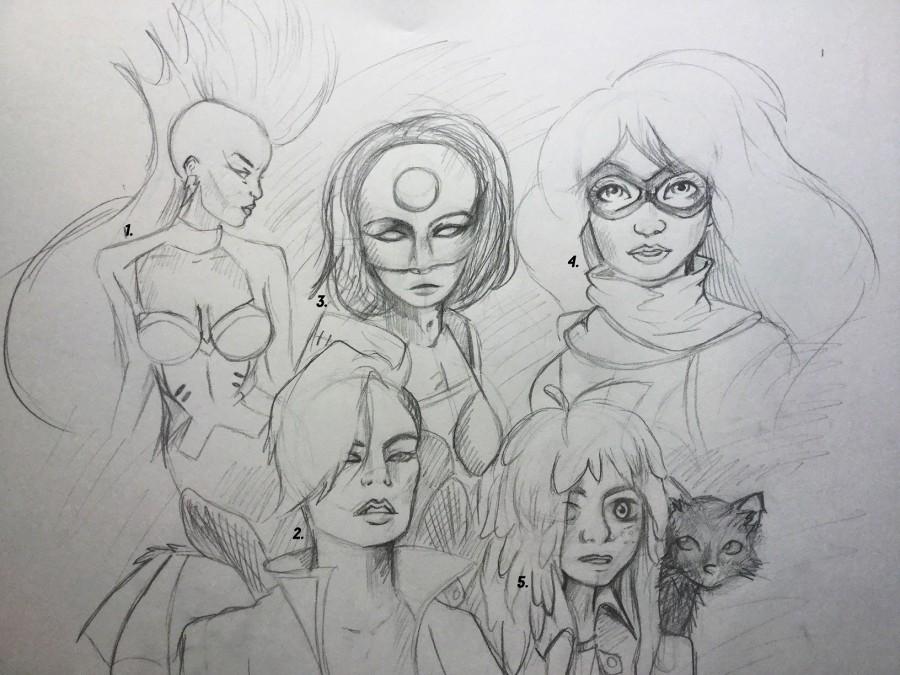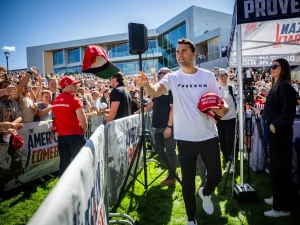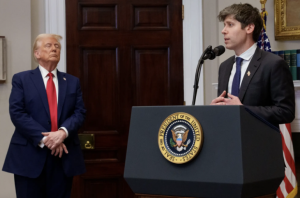Female superheroes need a bigger spotlight
Top to Bottom (Left to Right): Storm, Katana, Kamala Khan, Alana and The Girl
March 30, 2016
Where are all the badass women? In the world of comics, they are just too few and far between. For the sake of our culture, girls and boys need to look up to more than just male superheroes.
I am an avid collector of comic books and an aspiring comic artist. I won’t lie; my favorite superhero is not a female. It’s The Crow, created by James O’Barr.
But I’m troubled by how most superheroes in movies are male (and don’t get me started on all the remakes and sequels for Superman and Batman).
Filmdom’s superhero females, such as Gomora, Black Widow and Scarlet Witch, only appear as a member of the teams in the group movies or are the secondary characters in the male superhero movies.
Not many superhero movies lead with females; I can only think of Catwoman, Tank Girl, Ultraviolet, Super Girl, Electra and Wonder Woman.
So, It’s time for more.
Here are some female superheroes with compelling back stories:
Storm (created by Len Wien and Dave Cockrum of Marvel) is one of the first black female superheroes to be published by Marvel and is arguably the most empowered. Descended from a long line of African priestesses, Storm is a goddess with the ability to control the weather. After recruitment by the X‐Men, she becomes a leader in the mutant world and eventually takes the place of Professor X.
Alana (from “Saga” by Brian K. Vaughan and Fiona Staples of Image) appears in the midst of an intergalactic war. She ditches the military and goes on the run. In her struggle to survive, she protects her family, who is of a different alien species, from those who wish to drag them to war.
Katana (created by Mike W. Barr and Jim Aparo of DC Comics) loses her husband and children to the Yakuza. She takes up a sword, the Soul Taker, to avenge her family. The blade houses the souls of those slain by it and Katana can communicate with them. With the blade, which possesses the soul of her husband killed by someone else, she fights for justice.
Kamala Khan (created by G. Willow Wilson and Adrian Alphona of Marvel) appears in the 2015 Hugo award-winning, “Ms. Marvel: No Normal.” Kamala is a young Pakistani living in New Jersey. Struggling with her identity as an American‐Muslim, this teenager discovers her shape‐ shifting and healing abilities, making her the new Ms. Marvel.
The Girl (from “The True Lives of the Fabulous Killjoys” by Gerard Way and Shaun Simmons of Dark Horse) is the sole survivor of a group called “The Killjoys.” In this six‐issue series, The Girl is faced with two options: become a mindless drone or fight against the governing force, Better Living Industry. With her pet cat and a katana, The Girl fights beside Val Velocity and the Ultra Vs for her fallen friends and the right to live freely.
I hope the upcoming movies “Captain Marvel” and “Wonder Woman” will set a trend. It’s time to see more powerful women take the lead.








Aristotle Bean • Apr 9, 2016 at 4:06 pm
DC and Marvel comics, the two largest comics publishers in North America, are like the Republican and Democratic political parties respectively. Not in terms of politics, but rather as ideologies.
DC is conservative, the company ideology is that the heroes they produce are absolute, they are above the people and are their noble protectors. Look at Superman or Batman: both of these individuals are seen as an extension of the law in the DC universe. The Flash is pretty much seen as a member of the community like the police or fire department. The point is, everyone loves them and their lives are pretty much perfect.
Marvel, on the other hand, treats its characters as average joe’s: some are despised for who they are like the X-Men, can’t catch a break like Spider-Man, or is a recovering alcoholic who constantly questions his own ethics like Iron Man. On top of these problems all the heroes mentioned above were or currently are wanted criminals in the Marvel Universe. The point of the Marvel Universe is that all the characters are human.
Think of it like this: when you’re younger, you see your father as being untouchable, superhuman. That is how DC sees its heroes.
When you get older though, you see your father’s flaws: he’s not always right, he might even make some stupid mistakes. But he loves you, and does everything he can to help you despite his shortcomings. He’s a Marvel hero.
Marvel wussifies its’ male characters and masculines its’ female characters because liberal Millennials want their men to be more like women, or at least be feminist, and liberal Millennials want to perceive women to be like men.
So in the end, you get different perspectives depending on where you go for your superheroes.